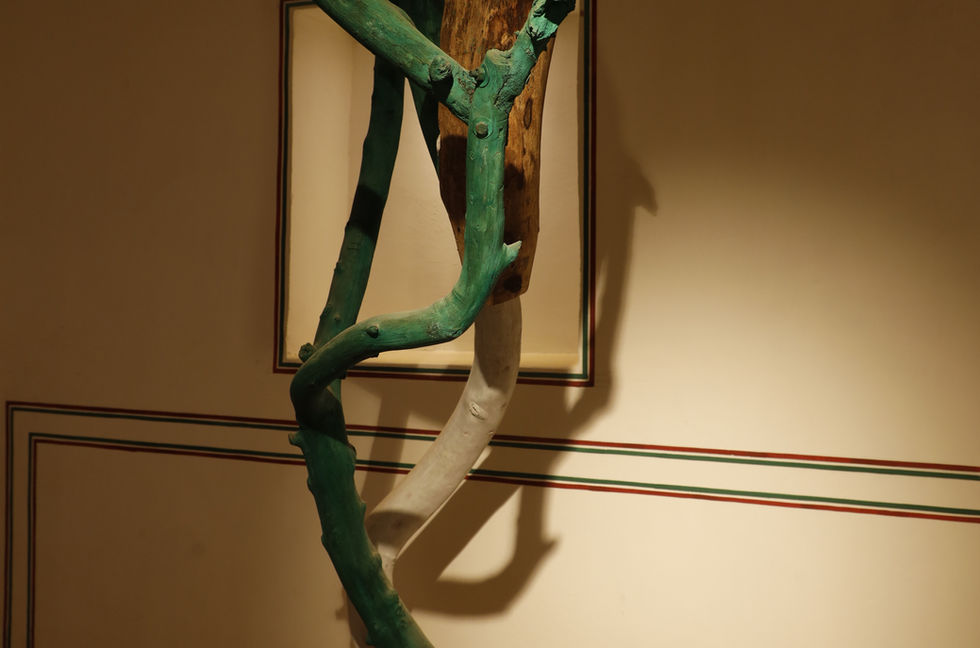
LATIKA KATT

Born in 1948, Latika Katt was among India’s foremost sculptors known for her experimental oeuvre, for which she innovated with a range of materials such as bronze, stone, and cow dung. She was also known for her busts of important personalities. She was a professor at the Jamia
Millia Islamia University, New Delhi, and divided her time between Delhi and Banaras. Katt received her BFA from Banaras Hindu University and MFA from the Faculty of Fine Arts, M. S. University, Baroda, in 1971. She was also the recipient of a research scholarship from the Slade School of Art, London in 1981.
Some of her seminal international exhibitions were at the Paris Biennale, Museum of Modern Art, Paris (1980), ‘STREE’ Show at Moscow, Leningrad & Tashkent (1988), International New Art Form Show at Chicago, US (1991), Osaka Triennale, Japan (1993), Asian Pacific Show, Bahrain (2000), and the Fourth International Art Biennale in Beijing (2010), among others. She had an equally robust exhibition calendar within India, with shows in the National Gallery of Modern Art, Delhi; Cymroza Gallery, Mumbai; Sakshi Gallery, Mumbai, among others. Her final body of works are currently on show at The Sculpture Park in Jaipur.
About The Work
Courtesy of the artist, Varanasi
With a career as a sculptor which spans six decades, Katt would cite two primary influences on her work: Nature and the city where she chose to live for most of her life: Varanasi. While she had worked extensively in a figurative mode, with some important commissions under her belt, it is for her abstract work that she is primarily known. She worked with every material possible and exhaustively explored all methods: modelling, carving, and casting. In the exhibition we have three varieties of her work, with a group of twenty new works which combine cast bronze with carved stone on display in one courtyard. These works, collectively entitled the “Abandoned” series, start with bronzes that have been cast from waxes concocted by the artist. These bronzes are then mounted within larger stones, of varying types, as a gem might be set into a gold or silver mount for presentation as a brooch. The two different materials fuse together into a new, sympathetic configuration that might resemble an archeological dig, a technological device, a surgical implant, or forgotten architecture. Also on view are two sculptures made solely from terracotta clay that speak to the artist’s interest in insects, as they bear similarities with termite mounds or wasp nests. To finish are two large sculptures of wood that are suspended from the ceiling, one with the addition of some copper elements, that exploit the characteristics of found branches and their linearity.






















